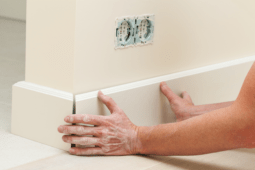When and How to Use a Strap Wrench Effectively
A strap wrench is an incredibly versatile tool that can make various tasks simpler and more efficient, especially when dealing with cylindrical objects. Whether you’re a seasoned professional or a DIY enthusiast, understanding how to use a strap wrench effectively can be a game-changer in numerous scenarios.
Ready to take on life with unshakable confidence? Whether you’re aiming to excel in your career, improve your relationships, or conquer DIY projects, NLP Hero’s Confidence Course is your key to success. Click here to start transforming your confidence and be better at everything you do!
This guide will explain the basics of strap wrenches, how to use one, and the different situations where they can come in handy. By the end of this article, you’ll have a comprehensive understanding of this essential tool and its applications.
What is a Strap Wrench?
A strap wrench consists of a handle and a flexible strap, usually made of rubber, cloth, or metal. The strap is looped around the object you want to turn, and the handle provides the leverage needed to rotate it.

This design is particularly useful for delicate, irregularly shaped, or difficult-to-grip objects with a traditional wrench. The strap’s material ensures that it won’t damage the object’s surface, making it ideal for polished, painted, or fragile items.
When and Where to Use a Strap Wrench
Strap wrenches are commonly used in plumbing, automotive repair, and even the kitchen. They can be used to loosen or tighten plumbing fixtures without scratching their surfaces. In automotive applications, they are ideal for removing oil filters or other cylindrical components that are difficult to grip. In the kitchen, a strap wrench can assist in opening stubborn jars or bottles.

In addition to these common uses, strap wrenches are also invaluable in certain industrial settings. They can be used to handle large pipes, secure cylindrical parts during assembly, or even manage large filters in HVAC systems. The strap wrench’s versatility makes it a must-have tool in any professional or home toolkit.
How to Use a Strap Wrench The Right Way
- Select the Right Strap Wrench: Choose a strap wrench with a strap length and material suitable for the object you are working on. For larger objects, a longer strap is necessary, while a rubber strap is ideal for delicate surfaces.
- Position the Strap: Loop the strap around the object you intend to turn. Ensure the strap is positioned securely and evenly around the object to avoid slippage.

- Adjust the Strap Tension: Pull the strap tight so it grips the object firmly. The tighter the strap, the less likely it is to slip when you apply pressure.
- Apply Leverage with the Handle: Hold the handle and apply steady, even pressure to turn the object. If the object is particularly stubborn, you may need to adjust the strap and try again.
- Complete the Task: Once the object begins to move, continue applying pressure until you have achieved the desired result. Be cautious not to over-tighten or over-loosen the object, as this could cause damage.
Maintenance and Care
To ensure your strap wrench remains in good condition, inspect the strap regularly for signs of wear or damage. Clean the strap and handle after each use to remove any dirt or debris. Store the wrench in a dry place to prevent rust or deterioration, especially if it has metal components. Proper care will extend the lifespan of your strap wrench and ensure it remains effective for years to come.

By following this guide, you should now be well-equipped to use a strap wrench effectively in various applications. Remember, the key to success with this tool lies in proper selection, positioning, and maintenance.
Ready to start your next project? Join our DIY community to receive tool tips, how-to guides, and exclusive creative insights. Subscribe to the ManMadeDIY newsletter now! Click here to unlock a world of hands-on inspiration.
Frequently Asked Questions (FAQs)
What materials can a strap wrench work on?
A strap wrench can be used on various materials, including metal, plastic, glass, and ceramic. The strap’s flexible material ensures it won’t damage delicate surfaces.
Can I use a strap wrench for both tightening and loosening?
Yes, a strap wrench is designed for both tightening and loosening objects. Simply adjust the handle’s direction to achieve the desired action.
Is a strap wrench suitable for high-torque applications?
While strap wrenches can handle a fair amount of torque, they are not designed for extremely high-torque applications. For such tasks, a traditional wrench or a specialized tool may be more appropriate.
How do I choose the right size strap wrench?
The right size strap wrench depends on the diameter of the objects you plan to work with. Ensure the strap length can accommodate the largest object you intend to handle.
Are strap wrenches safe to use on painted surfaces?
Yes, strap wrenches are generally safe for painted surfaces. The strap’s material is designed to grip without scratching or damaging the finish, making it ideal for delicate or polished surfaces.









